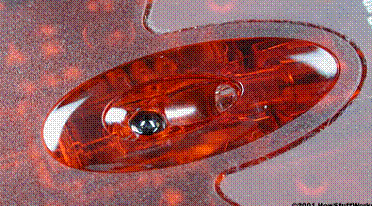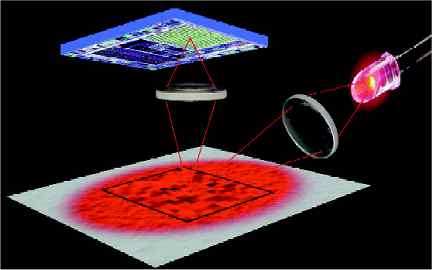





Published on Feb 14, 2025
An optical mouse is an advanced computer pointing device that uses a light-emitting diode (LED), an optical sensor, and digital signal processing (DSP) in place of the traditional mouse ball and electromechanical transducer. Movement is detected by sensing changes in reflected light, rather than by interpreting the motion of a rolling sphere.
The optical mouse takes microscopic snapshots of the working surface at a rate of more than 1,000 images per second. If the mouse is moved, the image changes. The tiniest irregularities in the surface can produce images good enough for the sensor and DSP to generate usable movement data. The best surfaces reflect but scatter light; an example is a blank sheet of white drawing paper. Some surfaces do not allow the sensor and DSP to function properly because the irregularities are too small to be detected. An example of a poor optical-mousing surface is unfrosted glass.
In practice, an optical mouse does not need cleaning, because it has no moving parts. This all-electronic feature also eliminates mechanical fatigue and failure. If the device is used with the proper surface, sensing is more precise than is possible with any pointing device using the old electromechanical design.
This is an asset in graphics applications, and it makes computer operation easier in general.
With advances in mouse technology, it appears that the venerable wheeled mouse is in danger of extinction. The now-preferred device for pointing and clicking is the optical mouse.Developed by Agilent Technologies and introduced to the world in late 1999, the optical mouse actually uses a tiny camera to take 1,500 pictures every second. Able to work on almost any surface, the mouse has a small, red light-emitting diode (LED) that bounces light off that surface onto a complimentary metal-oxide semiconductor (CMOS) sensor. The CMOS sensor sends each image to a digital signal processor (DSP) for analysis.
The DSP, operating at 18 MIPS (million instructions per second), is able to detect patterns in the images and see how those patterns have moved since the previous image. Based on the change in patterns over a sequence of images, the DSP determines how far the mouse has moved and sends the corresponding coordinates to the computer. The computer moves the cursor on the screen based on the coordinates received from the mouse. This happens hundreds of times each second, making the cursor appear to move very smoothly.

Optical mice have several benefits over wheeled mice:
• No moving parts mean less wear and a lower chance of failure.
• There's no way for dirt to get inside the mouse and interfere with the tracking sensors.
• Increased tracking resolution means smoother response.
• They don't require a special surface, such as a mouse pad.
Although LED-based optical mice are fairly recent, another type of optical mouse has been around for over a decade. The original optical-mouse technology bounced a focused beam of light off a highly-reflective mouse pad onto a sensor. The mouse pad had a grid of dark lines. Each time the mouse was moved, the beam of light was interrupted by the grid. Whenever the light was interrupted, the sensor sent a signal to the computer and the cursor moved a corresponding amount.
This kind of optical mouse was difficult to use, requiring that you hold it at precisely the right angle to ensure that the light beam and sensor aligned. Also, damage to or loss of the mouse pad rendered the mouse useless until a replacement pad was purchased. Today's LED-based optical mice are far more user-friendly and reliable.
If we take apart an optical mouse and look inside, we will find a complete imaging system. The mouse is essentially a tiny, high-speed video camera and image processor. As shown in figure below, a light-emitting diode (LED) illuminates the surface underneath the mouse. The light from the LED reflects off microscopic textural features in the area. A plastic lens collects the reflected light and forms an image on a sensor.
If we were to look at the image, it would be a black-and-white picture of a tiny section of the surface. The sensor continuously takes pictures as the mouse moves. The sensor takes pictures quickly-1500 pictures (frames) per second or more fast enough so that sequential pictures overlap. The images are then sent to the optical navigation engine for processing

Optical mice illuminate an area of the work surface with an LED, to reveal a microscopic pattern of highlights and shadows. These patterns are reflected onto the navigation sensor, which takes pictures at a rate of 1500 images per second or more
| Are you interested in this topic.Then mail to us immediately to get the full report.
email :- contactv2@gmail.com |